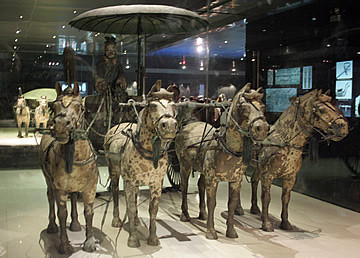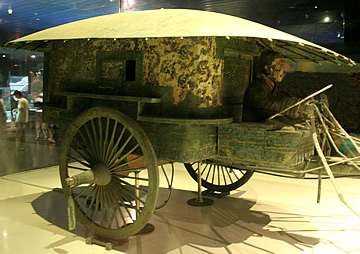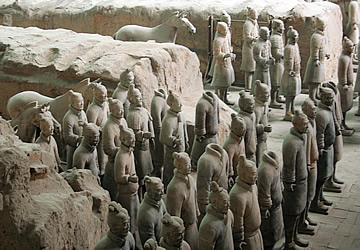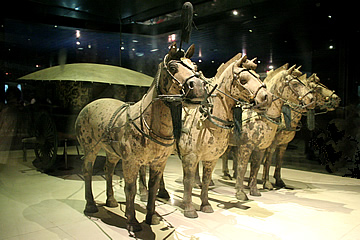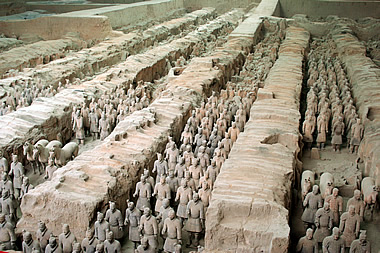

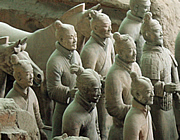
At the beginning of the Silk Road in China, impressively walled Ming dynasty Xi'an and the amazing Terracotta Warriors.
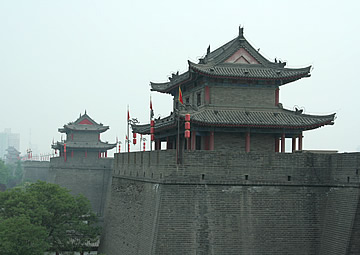
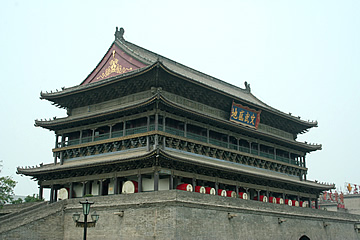
An early flight from Beijing to Xi'an, principally for a much anticipated visit to the Terracotta Warriors. We were met by our next guide and driver - throughout these were very friendly, though our Xi'an guide was less efficient than the others, though very knowledgeable in the museum in Xi'an.
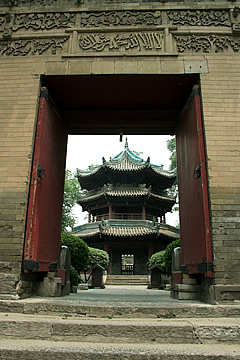
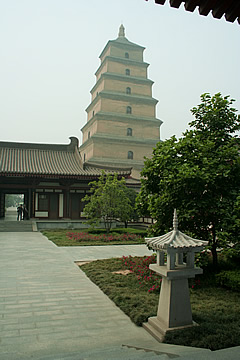
Xi'an, at the start of the Silk Road, has very impressive Ming Dynasty walls. Inside the walls is a Muslim quarter, which bears very little evidence of traditional Islamic art or architecture. A fine Drum Tower stands imposingly at the south-east corner of the Muslim quarter.
It was so tremendously hot when we visited that we eventually retreated to an air-conditioned shop before meeting up with our guide.
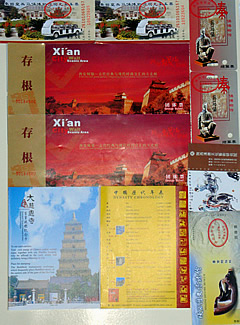
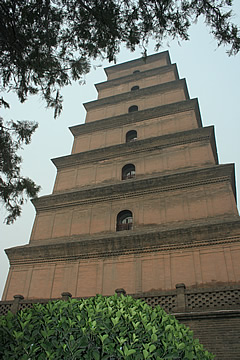
It was another stiflingly hot day when we visited the Big Wild Goose Pagoda. It was built as a storehouse to protect precious Sanskrit sutras from fire and is not particularly attractive. There is a very beautiful jade carving, however, depicting the life of the Buddha.
The pagoda was built at the behest of the 7th century Tang Dynasty Buddhist monk Xuan Zang who travelled to India to learn about Buddhism and returned some 16 years later bringing with him hundreds of Buddhist manuscripts - the pagoda was built to house the manuscripts. He spent the rest of his life translating as many as he could.
The Shaanxi History museum is really rather good, illustrating the history of the dynasties. I particularly liked some wonderful models of people.
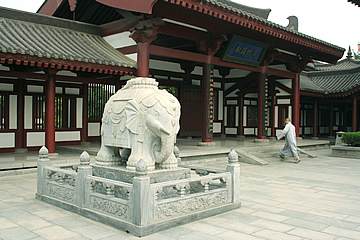
On this day we had lunch at the Theatre restaurant, which was better than yesterday's (couldn't possibly be worse!) but not as good as the food in Beijing. However, on the evening of our stay we had the Sofitel buffet - highly recommended! And the Dragon Seal Cabernet is not so shabby either.
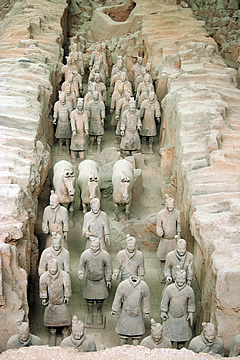
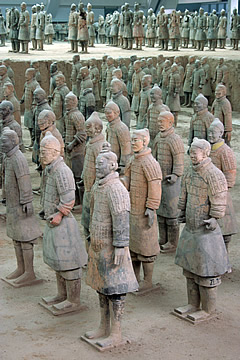
First a visit to a factory with an interesting description of how the warriors were made. Solid only up to their thighs, the hand and heads were made separately and attached to the mass produced bodies. Each face is different.
At the back of the factory, and obligatory to walk through, was a large shop - I really wish they'd drop this kind of thing! We had an atrocious meal in what is supposed to be the best nearby restaurant - what on earth must the others be like!
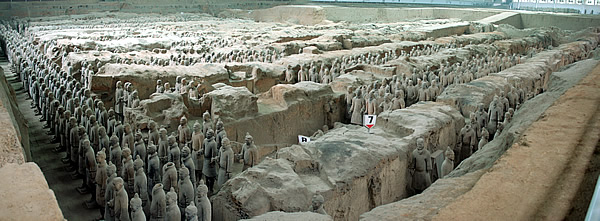
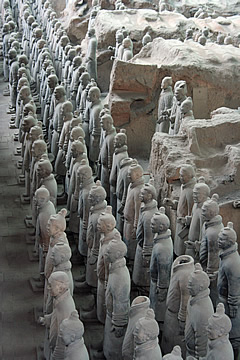
Created to guard the tomb of the emperor Qin Shi Huang (who began the construction of the Great Wall) around 200BC, the underground vaults of the Terracotta Army were discovered in 1974 when peasants were sinking a well. We were indeed very lucky as the place was almost empty and we had unrestricted access to the edge of the viewing platforms. Entering the first large vault is unforgettable - a stunning experience. This is one of the greatest sights in the world.
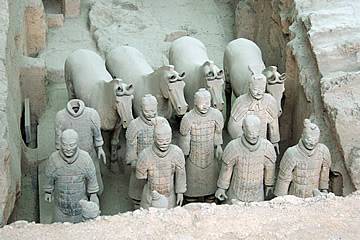
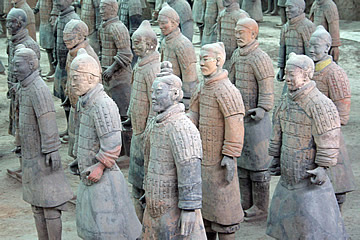
There are two large vaults and one smaller one. Vault 1 is the largest with over a thousand figures facing as you enter. The rear of Vault 1 is a 'hospital' area where warriors are reconstructed ready for redeployment.
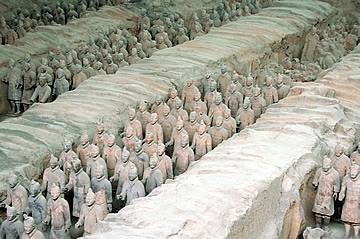
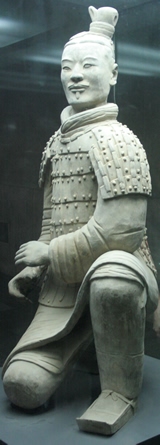
The soldiers are depicted wearing knee-length tunics, those in the vanguard have no armour or helmets - most seem to have a topknot of hair. We were told that if the vanguard soldiers survived warfare they were given armour and moved back in the lines. The warriors originally carried real weapons such as spears and bows and arrows and there were chariots, of which only the horses remain.
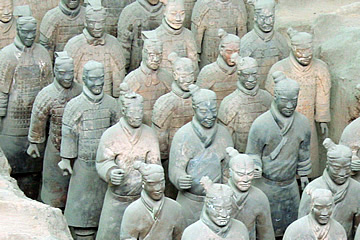
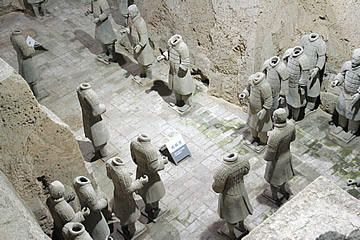
The second vault gives a better idea of how badly damaged most of the warriors are on excavation, lying smashed into many pieces. It also has four figures exhibited for visitors to see close up, the most beautiful of which is the archer. The only archers we saw in situ were broken ones in Vault 2 .
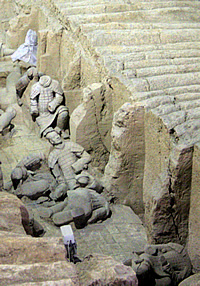
Vault 3 is smaller but interesting: this was the command post for the soldiers in the other vaults.
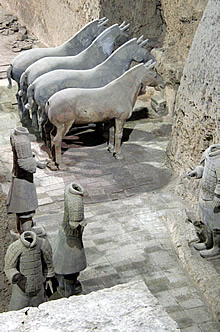
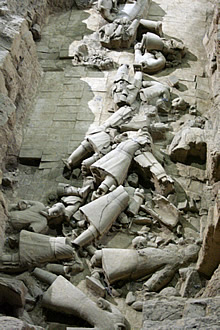
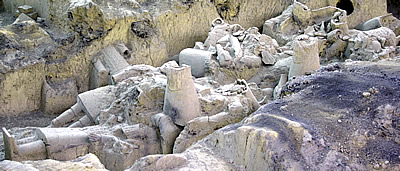
The colours in the photographs are a little tricky because of the artificial lighting colouring the scene in different shades.
The museum is absolutely essential for the two half-life-size bronze chariots it contains - absolutely stunning. The Imperial Fleet Leader's chariot, has four horses and a driver, the one in the rear was the Emperor's and is furnished with beds and seats. The detail is incredible - according to the Rough Guide even the fingerprints are delineated on the fingers!
